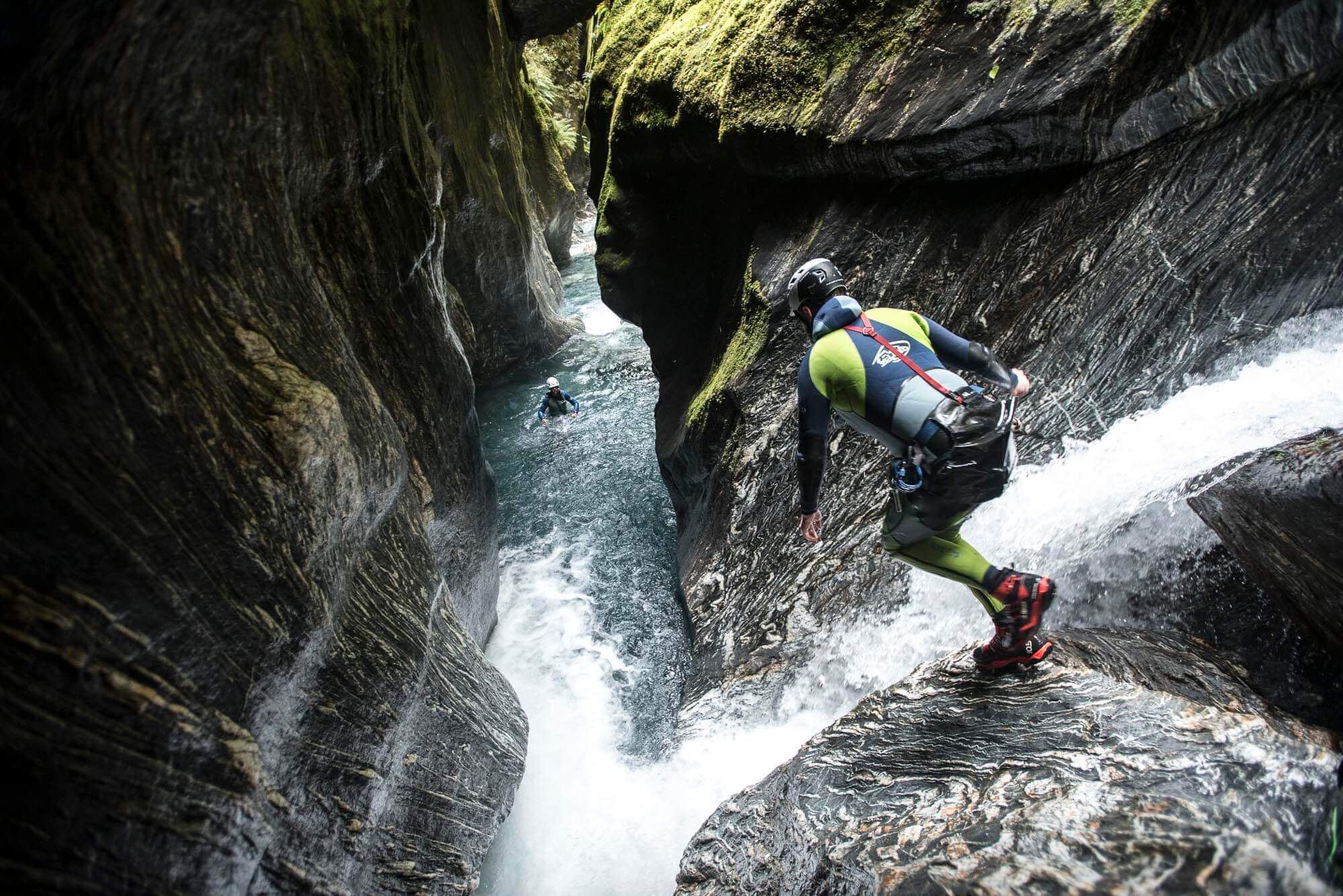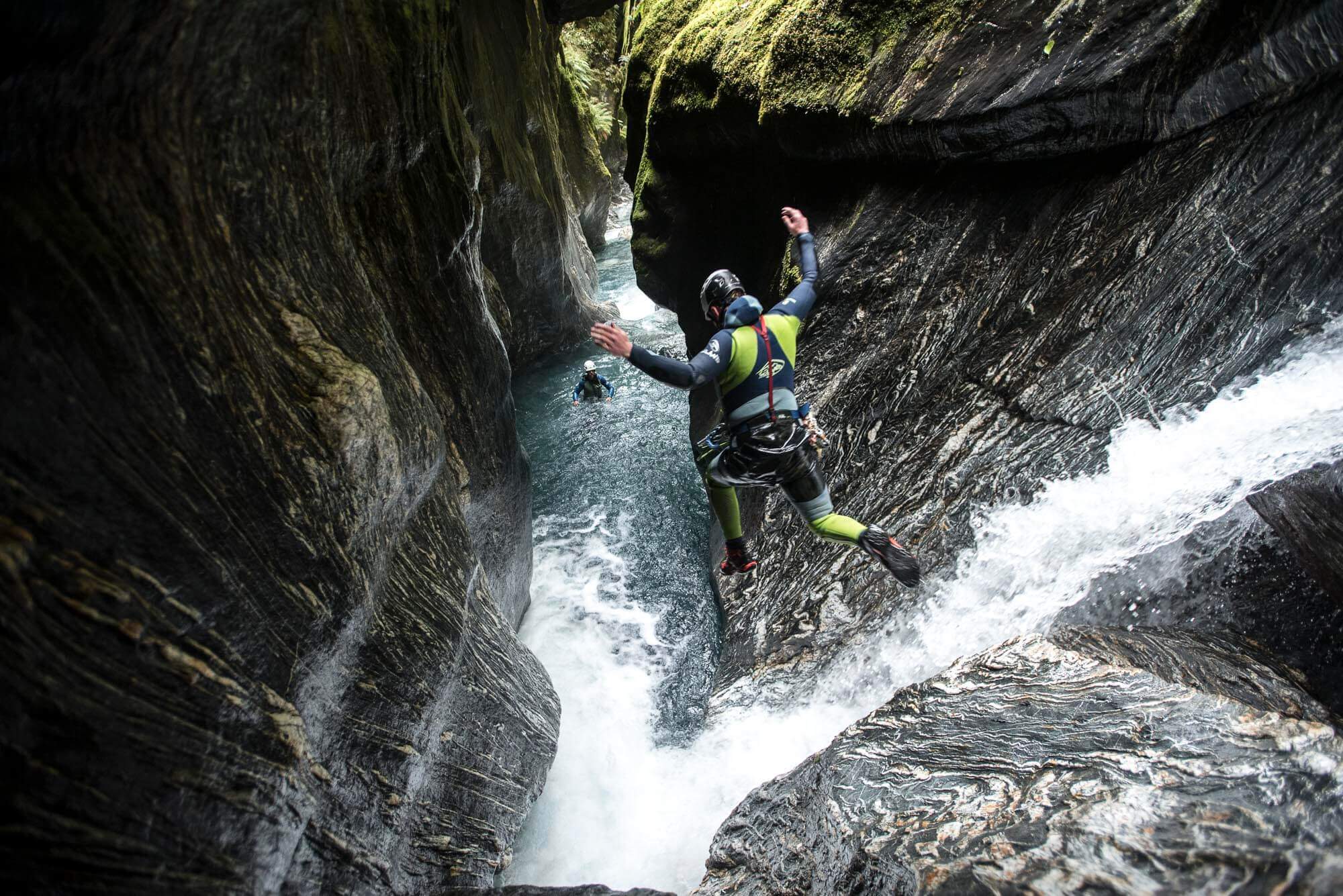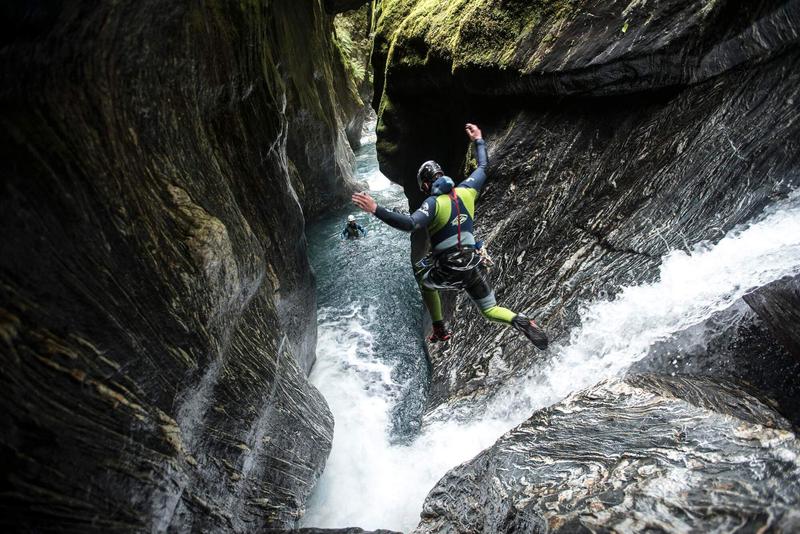To jump or not to jump?
Jumping is one of the most fun things we do when canyoning. It was one of the reasons I was attracted to canyoning the first time; jumping is cool and a huge thrill factor. But let’s remember that although jumping is super fun for most of us, it’s statistically the highest risk progression technique we use. Getting a jump wrong can have very serious consequences, especially in a deep & inescapable canyon. In the V7 Level 1 free online course, you will find other progression techniques and much more.
Here is a video where V7 Mentor Andrew Humphreys breaking down the principles and techniques
Basic Principles
Let’s look at some basic safety principles for jumping.
- Always check the landing pool - We can NEVER be sure the jump is safe unless the landing pool has been checked. Even if a guidebook or recommendation suggests it, a jump is never certain. Obstacles underwater can move, pools can fill up and debris could settle in the pool.
- Jumping is not compulsory - In most equipped canyons rated up to V3A3II jumps will most often have another option, such as a walk around, down-climb or abseil.
- Don’t jump with your Bag on your back - When we land a jump it will have some impact on our body. The higher the jump the more impact. If we are wearing a backpack on our back, it can be pushed upwards and force our head and neck forward. Preferably to throw or lower our bag instead.

When we are practising jumping techniques, it is advisable to start on small jumps between 2-3 meters. Here we can get the proper technique mastered before committing to any higher jumps.
Limitations
Jumps above 4 meters CAN result in serious injury if the technique is not performed correctly. Jumps above 8 meters will have a significant impact on our body, and require exceptional technique. I would suggest jumping over 8 meters should only be done by someone who is very experienced, even with experience there is always a high risk involved.
Jumping Technique
There are four phases to complete a safe jump, let’s look at them in more depth.
Jump Assessment
Before committing to a jump, a solid assessment of all the potential risks should be carried out. We teach this principle and breakdown in the Level 2 online course This must be done by physically checking the landing area, either by lowering a teammate first or by carefully downclimbing to the pool. The use of a dive mask will allow us to make an accurate visual assessment of the situation. Here are the considerations we should take into account whilst assessing a jump:
- Pool Depth - How deep is the pool, are there any hazards under the water?
- Jump height - How high is the jump, have I jumped this high before?
- Debris in Pool - Is there any floating debris that could get in the way?
- Water Movement - Is there a significant water movement at the bottom?
- Pool Exit - Is there a safe and sufficient exit from the pool?
- Trajectory to landing - Do I have to jump over rocks?
- Take off security - Do I need to be attached before the jump, is it sufficient?
- Stability - Is it slippery, how big is the take-off platform?
- Terrain profile - Are the walls sloping towards the landing area?
All these considerations should be looked at before making a decision whether it’s safe enough to jump. If any of the above considerations pose a level of risk we are not comfortable with, then we don’t jump.
If the landing area has muddy or highly-aerated water which makes it impossible to visually check the pool, then we should not jump.
Takeoff
The takeoff is effectively the first part of the jump sequence. It is important that we feel confident about the jump. This is evident in our body posture. Standing tall and confidently before we jump will start the whole technique well.

The best position to start is one foot in front of the other. From this position, we can transfer our weight onto our lead foot and push off effectively.
V7 Tip: Our eyes are our steering wheel. If we are looking where we want to go we will most likely go there. But we make sure that we don’t lean too far forward in order to look to our desired landing spot, in order to keep our body well balanced.
Flight
Ok, we’re not flying… we’re effectively falling in a controlled manner.
As we enter the flight part of the jump we need to think about our balance in the air. For example, if we were to straighten up our body with our arms tight by our sides, we would effectively be a rigid object falling through the air. We could turn or twist and land in an uncomfortable position.

A good body position looks something like this; our knees are slightly bent, our feet shoulder-width apart. Our back is straight and we keep our head up, but still looking where we are going. We can bring our arms out to the side to balance the flight.
As quickly as we enter the flight part of a jump, we need to be preparing for landing.
Landing
This is the final phase of the jump. We are preparing our bodies to enter the water.
A good position for entering the water is our feet together and knees slightly bent. Remember canyons are not bottomless. We may touch the ground at the bottom of the pool, but with a slight bend in our knees, we can absorb any shock.
We want to make sure our head is up, and our arms are into our body. We place our arms across our chest. When we start jumping for the first time, it’s common for people to put their hands out, or arms out to the side, but they should be brought in during landing. Having our arms out during landing can be dangerous, as it exposes our shoulders to injury.

In Summary:
Jumping is great fun but rarely actually required. In most cases, there is usually another option. If jumping doesn’t feel right, take the alternative route. There are 4 phases to jumping and it’s important to get them correct in order to enjoy the thrills of jumping in the canyon. Most importantly remember to always check the landing pool, and never assume a jump is OK without checking! Happy jumping…



